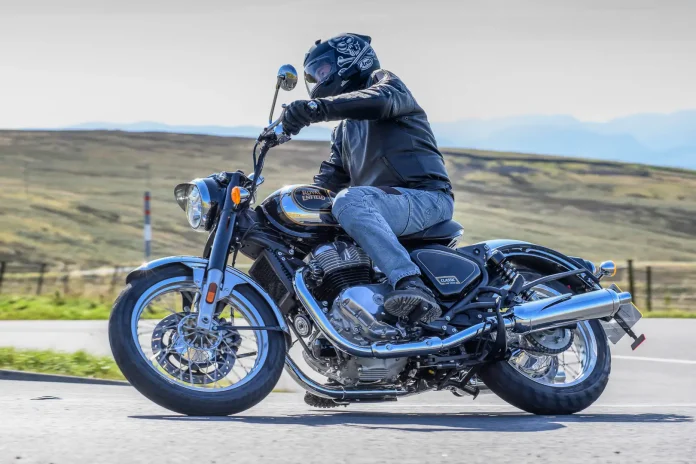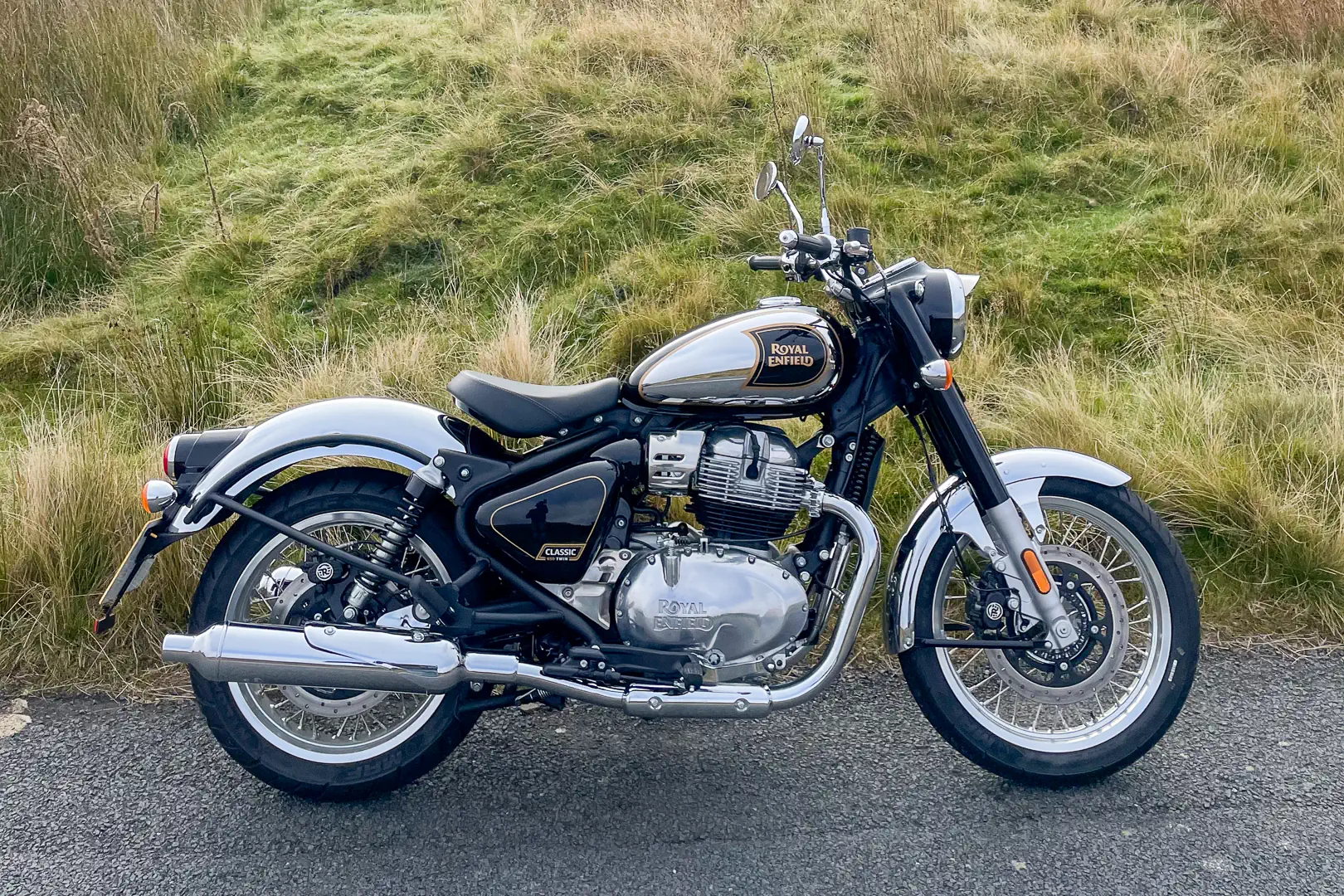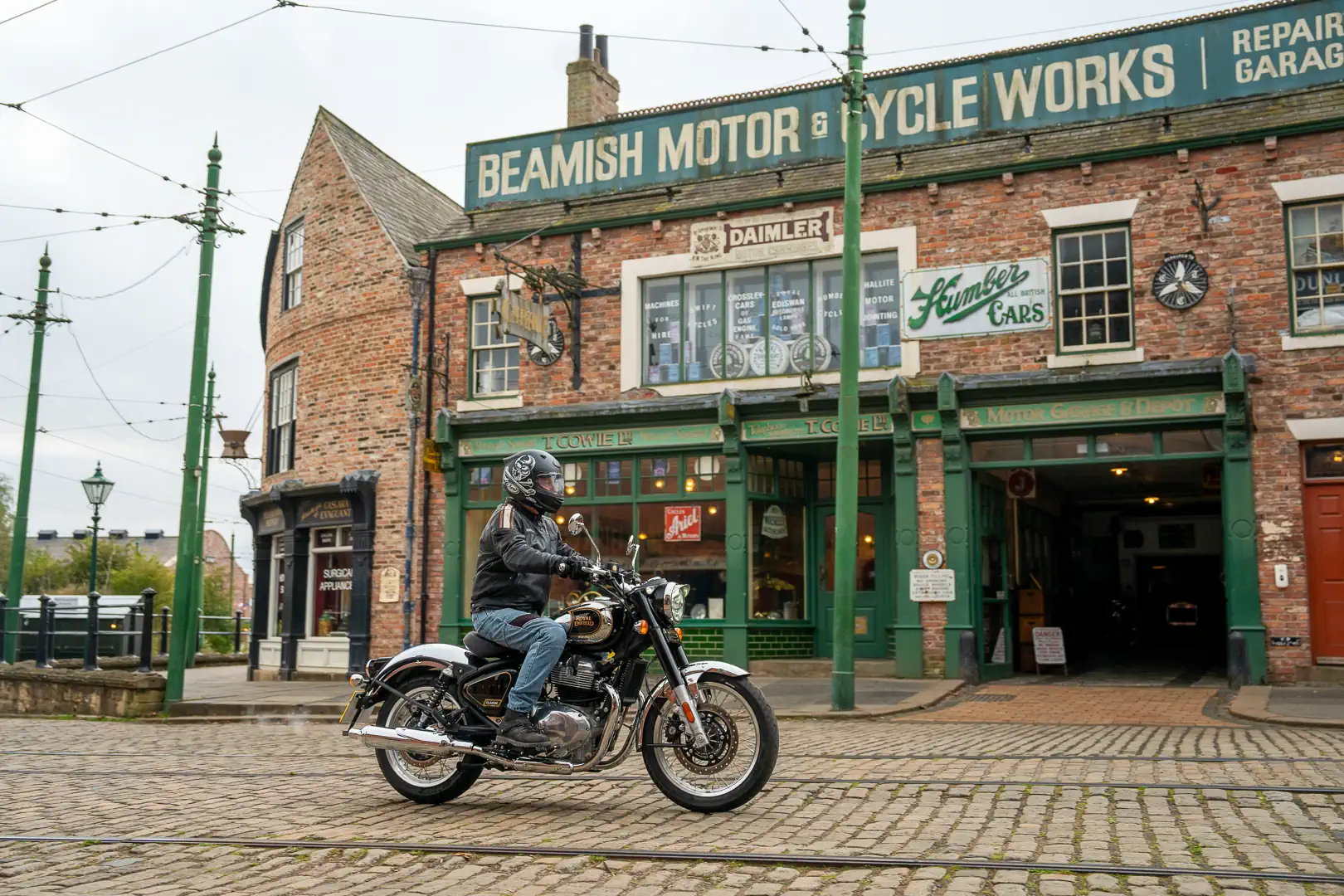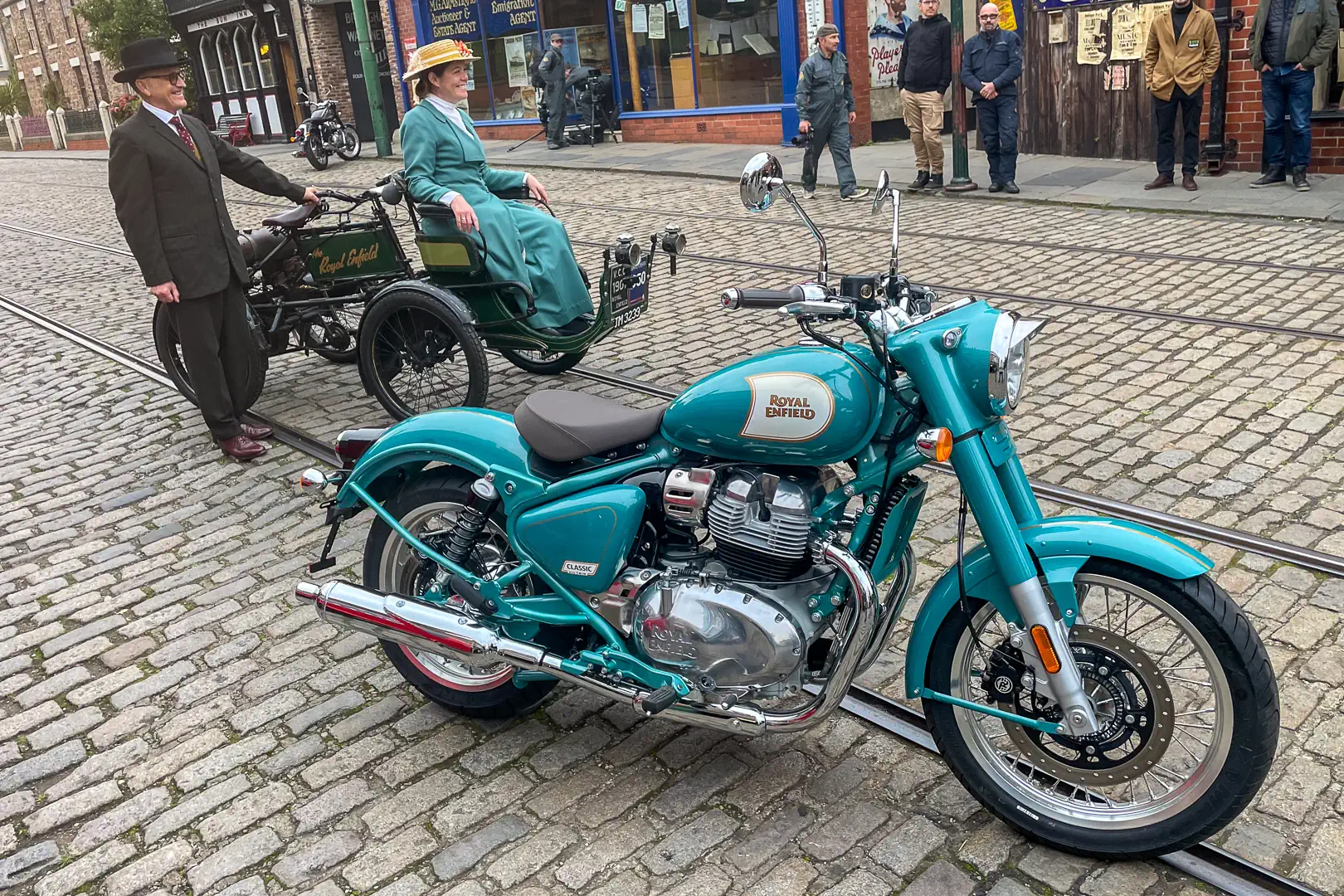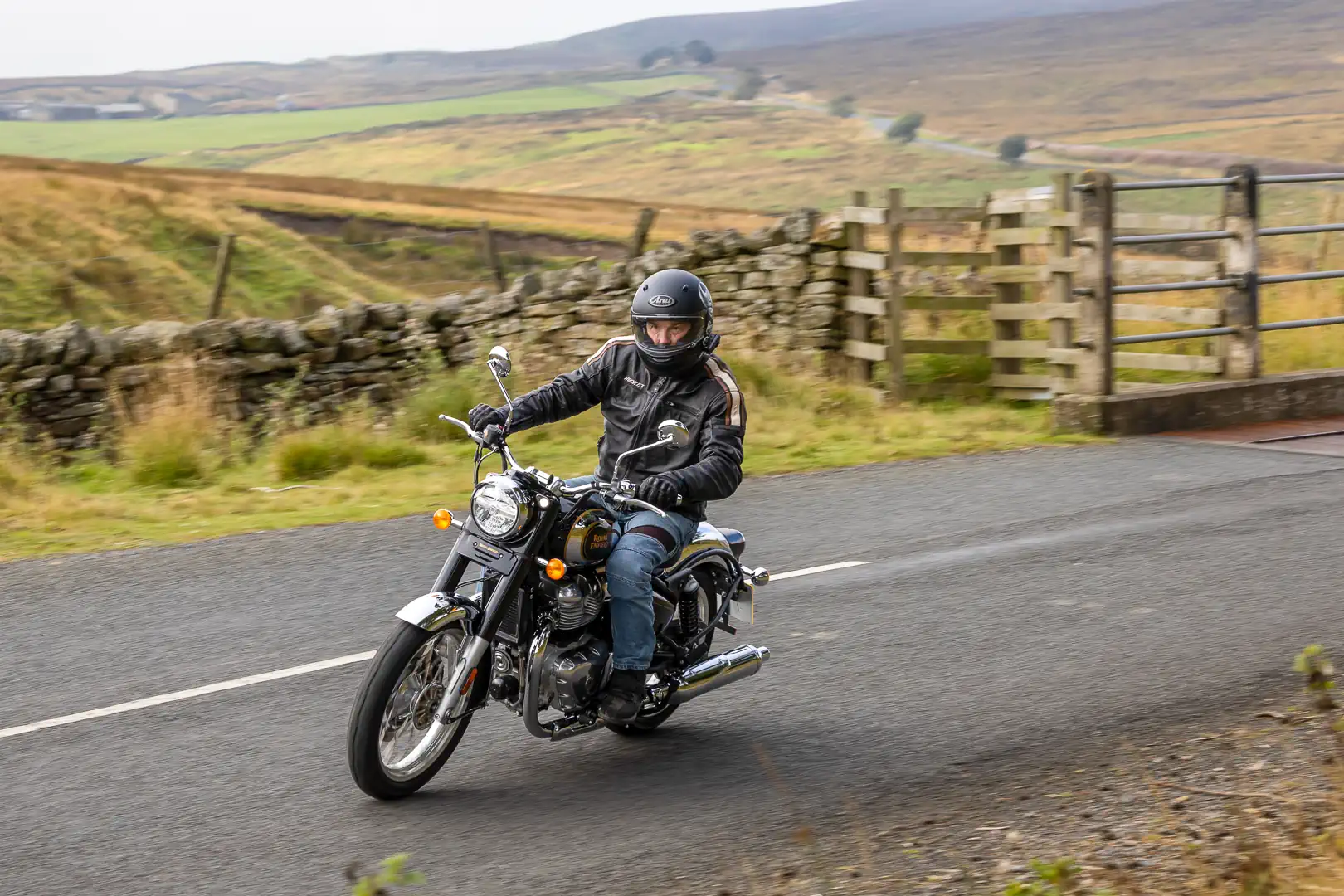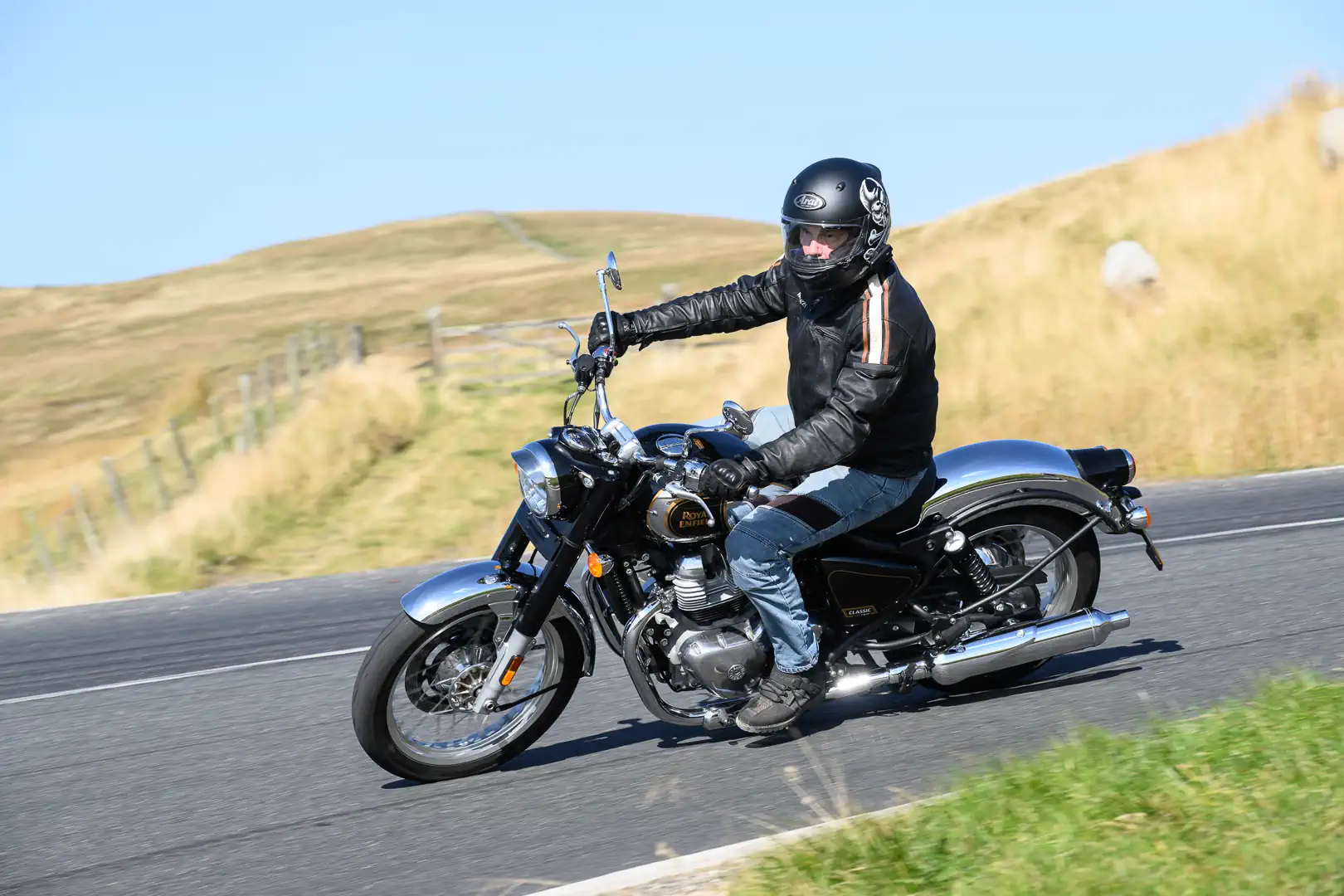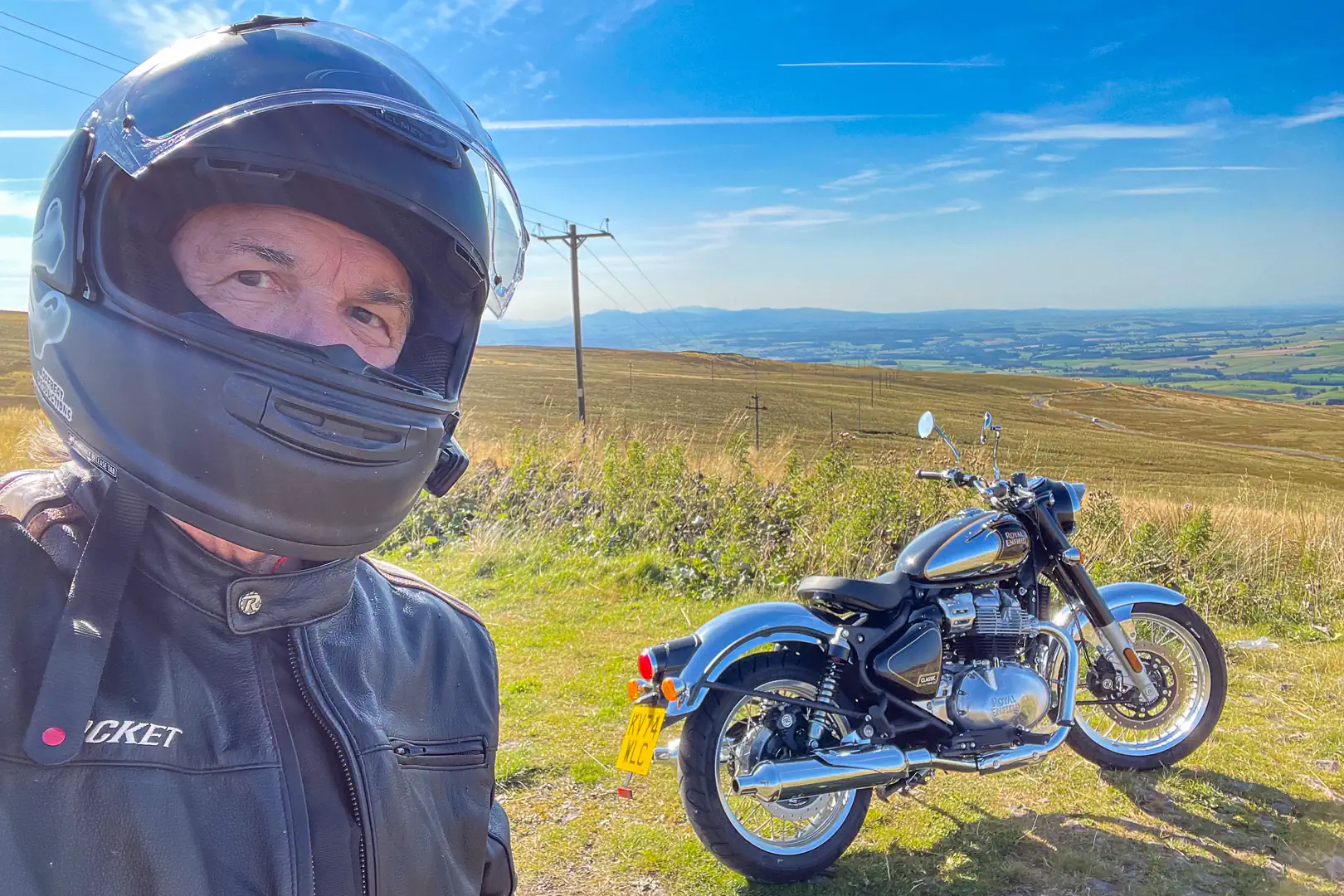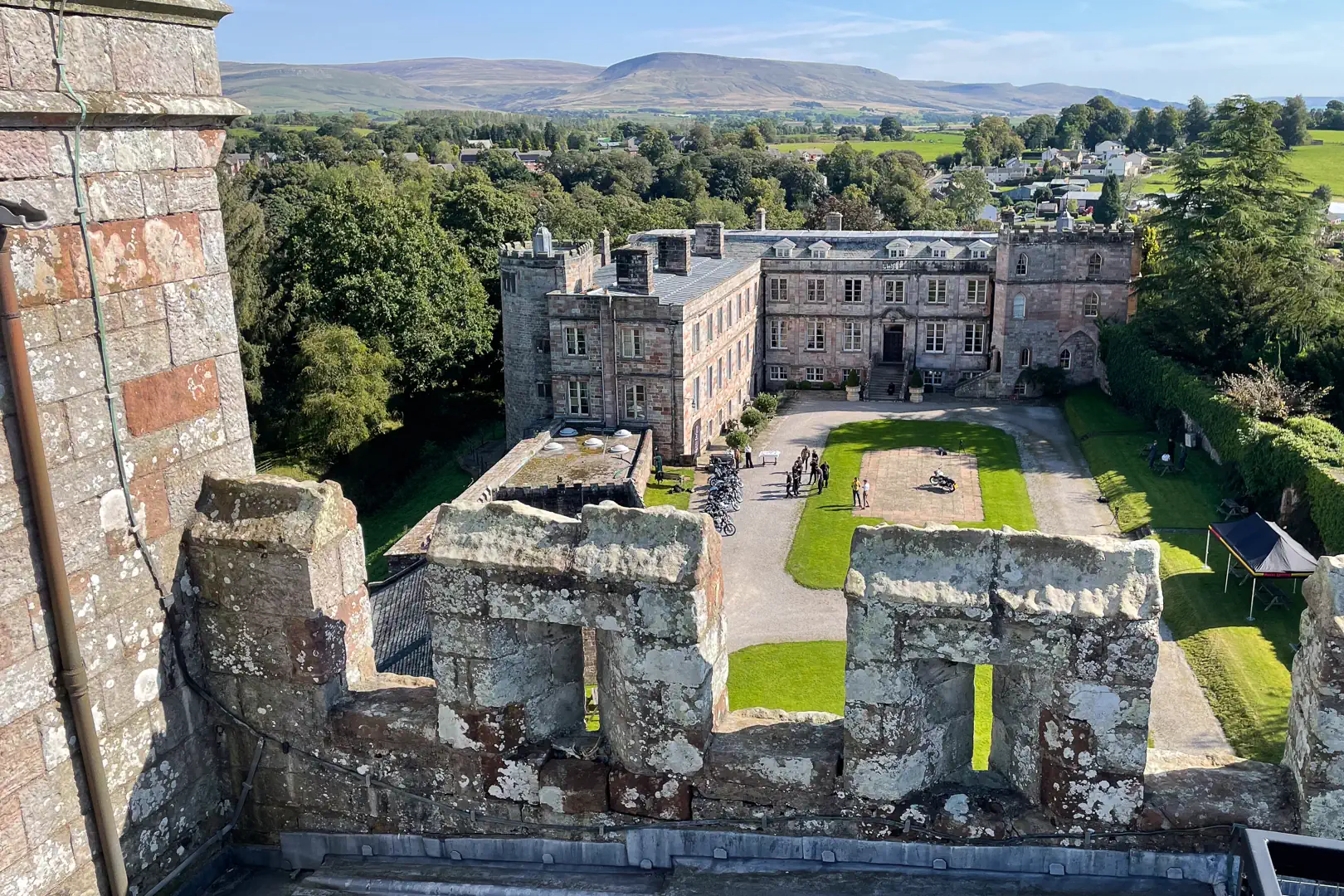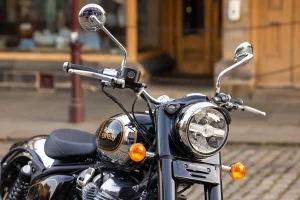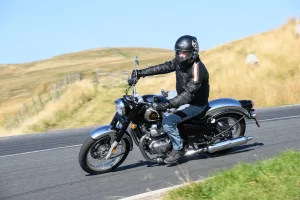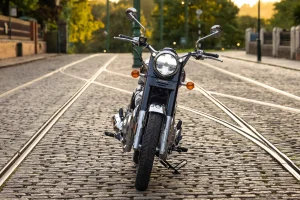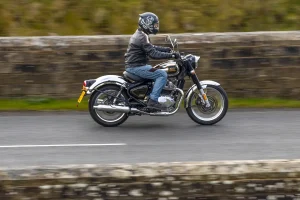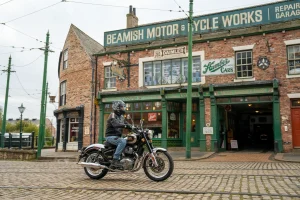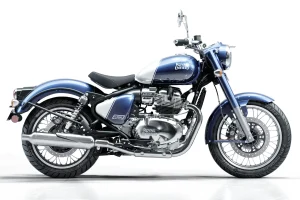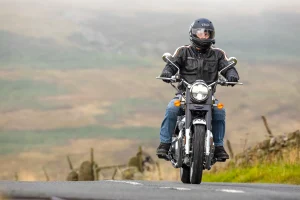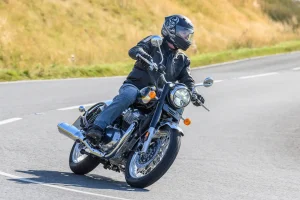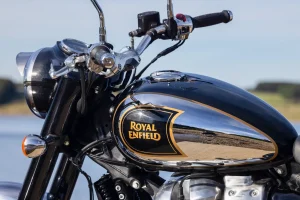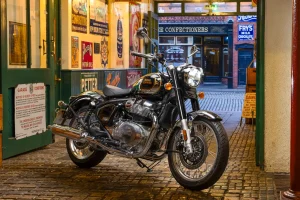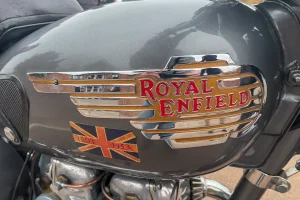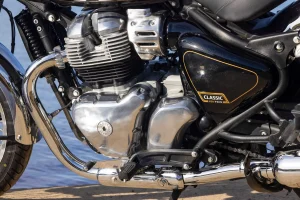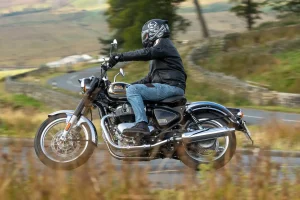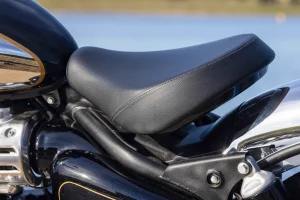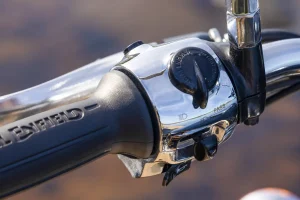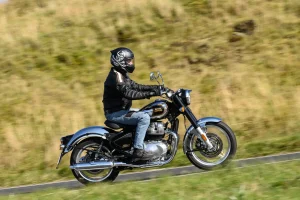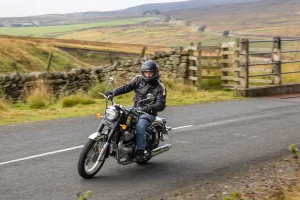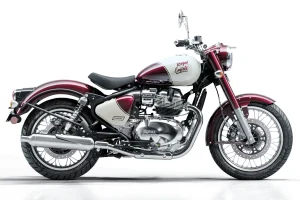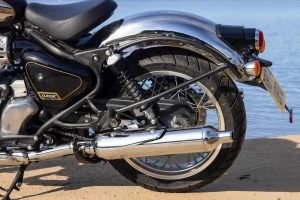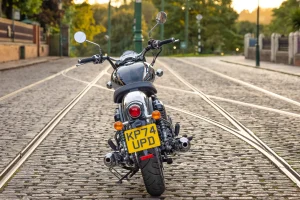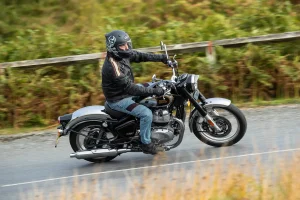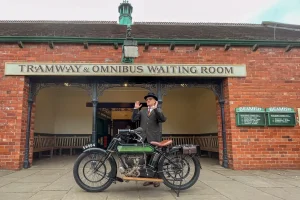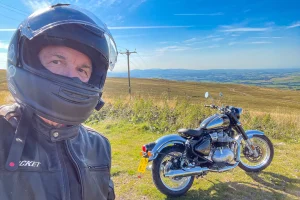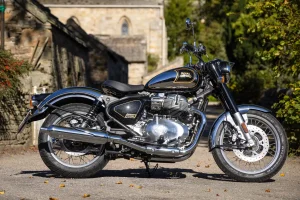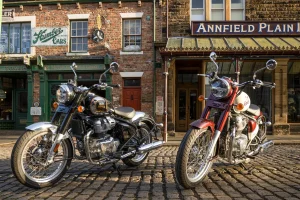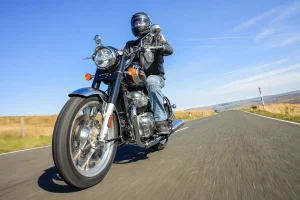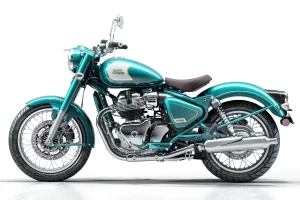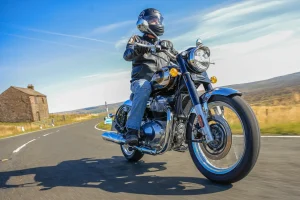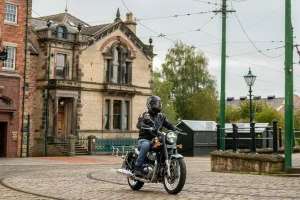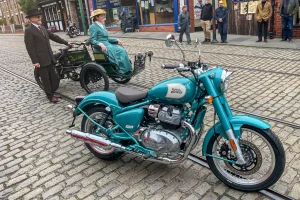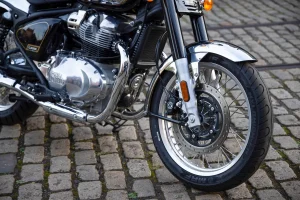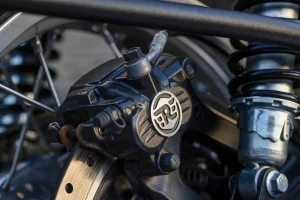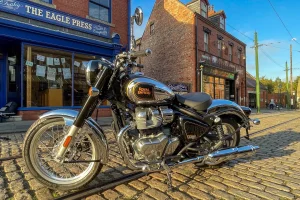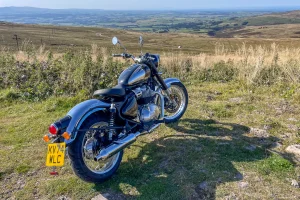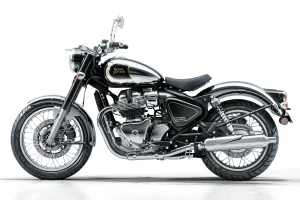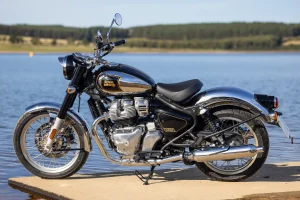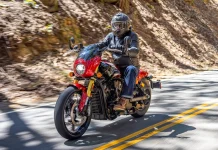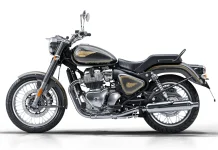No motorcycle company is more deeply rooted in its heritage than Royal Enfield, producing bikes in the early 21st century that remarkably echoed the 1955 Bullet’s design. An evolution began in 2010, when Royal Enfield retired the non-unit, cast-iron 350 single and introduced a modern, unit-construction engine with fuel injection.
In 2018, Royal Enfield embraced modern engineering with the 650 Twin, an air-cooled, four-valve-per-cylinder, single-cam engine that retained classic charm. This, alongside the updated 350 engine, propelled Royal Enfield from a niche brand selling 52,000 motorcycles in 2010 to a force to be reckoned with, moving over one million units in 2024.
While the 350s dominate Royal Enfield’s home market in India, accounting for 90 percent of sales, the 650 Twin models drive its booming export market, contributing 25 percent of units sold internationally. This success drives Royal Enfield’s strategic expansion of the 650 Twin platform.
Royal Enfield has masterfully expanded the 650 Twin platform, starting with the upright Interceptor and café-style Continental GT in 2018, followed by the Super Meteor cruiser, Shotgun 650 bobber, Bear 650 scrambler, and now the Classic 650. Though the Classic 650 awaits its U.S. debut, Royal Enfield invited me to Newcastle upon Tyne in North East England to experience it firsthand, and enjoy an unexpected history lesson or two.
The educational highlight was Beamish, The Living Museum of the North, with its six immersive neighborhoods recreating 1820s Pockerley, 1900s Town, 1900s Pit Village, 1940s Farm, 1950s Town, and 1950s Spain’s Field Farm. Each features cast members in period clothing and working businesses. When you see a barber shop or auto repair shop at Beamish, it works—they cut hair and overhaul vehicles. If you’re in the area, Beamish is well worth a day or two of your time.
Royal Enfield’s sharp PR department used the different exhibits to showcase vintage motorcycles against a time-appropriate backdrop as we walked through Beamish. The presenter’s knowledge, combined with the beauty of the restored motorcycles in a reflective environment, was simply astounding.
While it was quite an undertaking to give context to the new Royal Enfield Classic 650, it was certainly worth it from my perspective.
Following in the footsteps of the Classic 350, the Classic 650 is an absolute looker available in four colorways. Black Chrome exudes timeless elegance; Bruntingthorpe Blue feels stately; Teal brightly demands attention; and Vallam Red adds a playful flair with Royal Enfield’s scripted logo on the tank. I love them all and was knocked out by the Teal. However, I tested the Black Chrome, appreciating its dedication to authenticity.
Of course, there’s much more to the Royal Enfield Classic 650 than some beautifully applied paint and chrome. It’s always about the ride.
The ergonomics of the 650 are as classic as its name. The wide handlebar sweeps back gracefully, putting the grips in a wholly natural position. The footpegs are ever so slightly forward, accenting comfort over a sporting stance. The solo seat with its cantilevered mounting offers just the right amount of support and looks fantastic. The Classic 650 is about a traditional riding stance rather than cruiser-style relaxation. The ergonomics couldn’t match the styling more exquisitely, and allow for all-day riding with no excuses. Fuel consumption at an estimated 50 mpg and a four-gallon fuel tank means you can log nearly 200 miles before visits to the petrol station.
The cockpit is appropriately retro. A chrome-framed round dash is embedded in the headlight nacelle, with an LCD panel interrupting the flow at the bottom. The main section is analog-style, revealing your velocity, with warning lights that are invisible until needed. The LCD lets you know which gear of six you’re in, fuel level, range, time of day, and odo/trip meters—all worth the cost of a minor styling deviation. Flanking the dash is a retro keyed ignition and RE’s turn-by-turn navigation system—another clock if it’s not giving directions.
The left handlebar sports period-inspired switchgear, with modern horn and turn signal switches alongside a stylish round headlight control that doubles as a passing flash with a nudge. A discreet, forward-facing button scrolls through dashboard information and navigation prompts. On the right, simplicity reigns with a red rotary dial—mirroring the headlight switch—that serves as both the starter and kill switch, plus a hazard light toggle, all of which are mastered in about 11 seconds.
Features you won’t find on the 2025 Royal Enfield Classic 650 include power modes, cruise control, traction control, or any other electronic aids and nannies. ABS is standard, though not adjustable, so don’t look for a switch.
The 650 Twin motor doles out 46 horsepower at 7250 rpm and a satisfying 39 ft-lbs of torque at 5650 rpm. The power is distributed in a linear and friendly manner—the EFI is dialed in, with the hardware discreetly camouflaged by louvered chrome covers. The moderately oversquare 648cc twin is the essence of usability and approachability. The six-speed gearbox is fully manual, as it should be, with the shifts requiring a willful nudge. Certainly, riders moving up from Royal Enfield’s 350 singles will feel right at home.
Riding all day through North East England’s countryside, with a brief jaunt into Scotland, was pure joy on two wheels. The undulating roads of the North Pennines National Landscape perfectly tested the Classic 650’s chassis, while the moors offered a timeless scenic experience. These are the types of roads the bike was developed on, and it shows.
Riding the Classic 650 isn’t about speed or aggressive cornering; it’s about smoothly linking sweeping turns, imagining yourself riding the same roads 75 years ago. The nostalgic experience comes without the drawbacks of vintage bikes—unreliable engines, primitive suspension, lackluster brakes, and sketchy tires—as the Classic 650 delivers modern dependability.
The Classic 650 has its own handling characteristics, courtesy of a 19-/18-inch wire-spoke, tube-style wheelset that is almost period-correct. Really, we didn’t want a 19-inch rear wheel. The large-diameter wheels favor gyroscopic stability, and the long-wearing, bias-ply MRF Nylohigh-N tires provided enough traction to meet the Classic’s modest demands. I took a detour on a slightly challenging and inclined gravel road, and the MRF rubber acquitted itself nicely—a lot fewer roads were paved in post-World War II England. Despite riding in North East England, the weather gods blessed me with no precipitation, so I can’t comment on performance in wet conditions.
Sure, cornering requires a firm push on the wide handlebar. However, when you do, the Classic 650 rewards you with a predictably held line—inspiring reassuring confidence. The footpegs may scrape on tight bends, such as the Hartside Pass Hairpin on the A686, serving as a gentle reminder to ease up and take in the scenic overlook at Hartside Pass.
While the Classic is not as nimble as the INT, it handles twisty roads better than a cruiser, with a relaxed, flowing character that suits leisurely rides where you’re taking in the natural beauty of the route.
The fixed-damping suspension is calibrated for a smooth ride, though the damping is adequate to prevent unwanted wallowing in the corners. The covered fork might not strike you as a Showa product, but that’s what’s underneath, and it allows a generous 4.7-inch stroke. The twin shocks are a bit less forgiving of rough roads, with just 3.5 inches of wheel travel on offer. The spring preload is adjustable on the shock, allowing for a passenger on a factory accessory pillion.
With a British guide showing me the way, the speeds inevitably started to pick up. While the platform keeps speeds in double digits, we were certainly going fast enough to allow a thorough test of the brakes featuring RE-branded calipers. That’s a 320mm disc in the front and a 300mm rotor in the rear, so the braking power is there for the taking. At the front, you have to tug on the brake lever aggressively to achieve significant stopping power—the setup is rightfully aimed at smooth braking engagement in everyday use. That rear 300mm disc can overwhelm the back tire fairly easily, so take it easy on the pedal, unless you like engaging the ABS.
The ride paused for lunch at Appleby Castle in Appleby-in-Westmorland, once home to George Washington’s father, Augustine. Though its 900-year history predates Royal Enfield’s timeline, it was a fantastic stop with a superb weekday Sunday roast for lunch.
Touring the grounds is a pleasure. Take the steps to the top and you’re rewarded with spectacular views of the area, including River Eden that flows through town. Among the many museum pieces I was admiring was a selection of helmets worn by soldiers and jousters., I was given the opportunity to try one on. It fit perfectly, though I can’t imagine going into battle or jousting with it—okay, maybe I can. It’s a feeling I’ll never forget, though I was glad to be back in my Arai Contour-X when it came time to leave.
Riding through towns is a natural habitat for the Royal Enfield Classic 650. Sure, the clutch pull might wear on your hand a bit if you were in a metropolitan area all day long. However, for most riding, it’s fine. The MRF tires are fine around town, even on the Beamish cobblestones that are crisscrossed by rails for the vintage trolley.
Should you find yourself on a dual carriageway, the Classic 650 is good for around 85 mph or so—you will notice the wind blast, rest assured. Stability with the large hoops is fine, and the tires don’t wander. My assessment may change when I get the bike on my home turf, and it has to deal with the rain grooves and whoops of the infamous San Diego Freeway.
The 2025 Royal Enfield Classic 650 is a welcome addition to the 650 Twin family. They’re all different, and I find great enjoyment in each of them. Picking a favorite between them would tax my impartiality, and I can see someone owning all six flavors—they are that distinctive. Among them, the Classic 650 stands out as the most relaxing ride and the most authentic retro experience among the siblings. Royal Enfield has brilliantly crafted six variations from a single platform, even without introducing a faired model to honor their Build.Train.Race women’s road racing program. All that remains is for Royal Enfield to bring the Classic 650 to the United States.
Photography by Evan Allen, Stuart Collins, Jason Critchell, Felix Mizioznikov, Oleguer Serra Prats, Don Williams et al
RIDING STYLE
- Helmet: Arai Contour-X
- Communications: Cardo Packtalk Pro
- Jacket: Joe Rocket Dakota
- Back protection: Joe Rocket SW Spine
- Gloves: Joe Rocket Diamondback
- Jeans: Joe Rocket Accelerator
- Boots: Joe Rocket Outbreak
2025 Royal Enfield Classic 650 Specs
ENGINE
- Type: Parallel twin
- Displacement: 648cc
- Bore x stroke: 78 x 67.8mm
- Maximum power: 46 horsepower @ 7250 rpm
- Maximum torque: 39 ft-lbs @ 5650 rpm
- Valvetrain: SOHC; 4 vpc
- Compression ratio: 9.5:1
- Fueling: EFI
- Cooling: Air and oil
- Transmission: 6-speed
- Clutch: Wet multiplate
- Final drive: Chain
CHASSIS
- Frame: Steel-tube spine
- Front suspension; travel: Non-adjustable Showa 43mm fork; 4.7 inches
- Rear suspension; travel: Spring-preload adjustable shocks; 3.5 inches
- Wheels: Wire-spoked w/ aluminum rims
- Tires: MRF NyloHigh-N
- Front tire: 100/90 x 19
- Rear tire: 140/70 x 18
- Front brake: 320mm disc w/ twin-piston floating caliper
- Rear brake: 300mm disc w/ twin-piston floating caliper
- ABS: 2-channel
DIMENSIONS and CAPACITIES
- Wheelbase: 58.1 inches
- Seat height: 31.5 inches
- Fuel tank capacity: 3.9 gallons
- Estimated fuel consumption: 50 mpg
- Curb weight: 536 pounds
COLORS
- Vallam Red
- Bruntingthorpe Blue
- Teal (+£100)
- Black Chrome (+£300)
2025 Royal Enfield Classic 650 Price: from £6499


